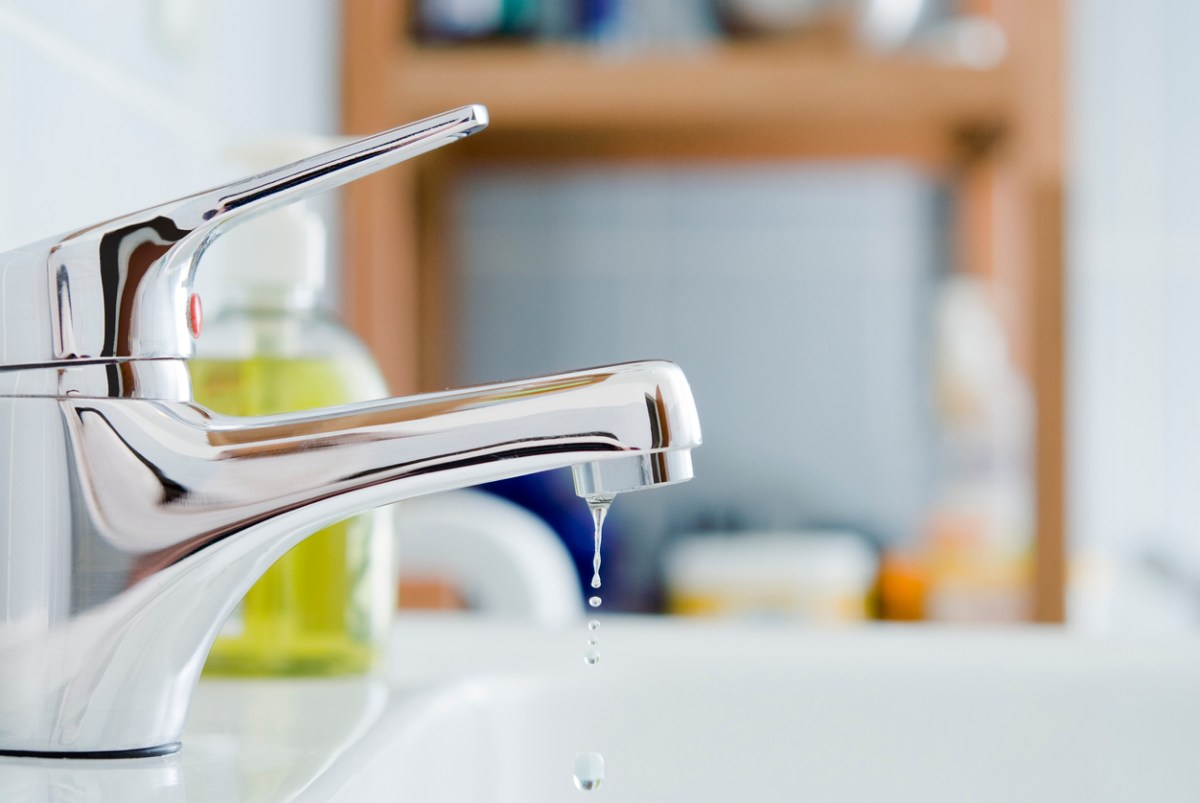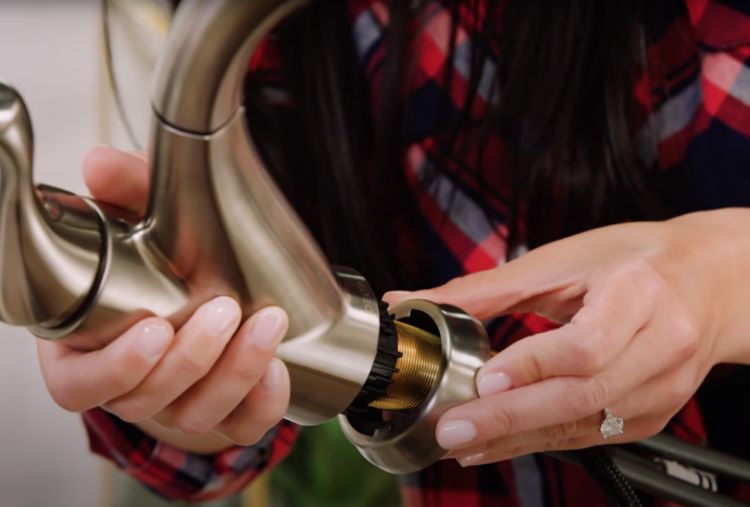The Factors Behind Repairing a Malfunctioning Faucet
The Factors Behind Repairing a Malfunctioning Faucet
Blog Article
Almost everyone will have their personal theory in relation to How to Fix a Dripping or Leaky Faucet .

Leaking taps might appear like a small inconvenience, however their impact goes beyond simply the aggravation of the audio. From drainage to incurring unnecessary monetary prices and wellness risks, disregarding a leaking faucet can cause various consequences. In this short article, we'll delve into why it's vital to resolve this typical home concern immediately and successfully.
Waste of Water
Environmental Impact
Dripping taps add dramatically to water wastefulness. According to the Epa (EPA), a single tap leaking at one drip per second can throw away greater than 3,000 gallons of water annually. This not only pressures water resources but additionally affects ecosystems and wildlife based on them.
Step-by-Step Overview to Repairing a Dripping Tap
Devices Required
Before trying to fix a trickling faucet, gather the needed devices, including an adjustable wrench, screwdrivers, substitute components (such as washing machines or cartridges), and plumber's tape.
Typical Tap Issues and Their Solutions
Recognize the sort of tap and the specific issue triggering the drip. Typical issues consist of damaged washing machines, rusty shutoff seats, or defective O-rings. Refer to manufacturer directions or on-line tutorials for step-by-step guidance on repair work.
Financial Costs
Increased Water Bills
Past the ecological influence, leaking faucets can inflate water costs considerably. The collected waste in time translates right into greater utility expenditures, which might have been avoided with prompt repair services.
Prospective Home Damage
In addition, extended trickling can cause damage to components and surfaces bordering the faucet. Water buildup can cause discoloration, corrosion, and even architectural issues if left ignored, resulting in extra fixing costs.
Health Concerns
Mold And Mildew and Mold Development
The consistent visibility of dampness from a leaking tap creates a perfect atmosphere for mold and mildew and mildew growth. These fungi not only endanger interior air quality however additionally pose health risks, especially for individuals with breathing conditions or allergies.
Waterborne Illness
Stagnant water in dripping faucets can become a breeding place for microorganisms and various other microorganisms, boosting the danger of waterborne diseases. Pollutants such as Legionella bacteria prosper in stagnant water, possibly bring about severe health problems when ingested or breathed in.
Do it yourself vs. Professional Fixing
Advantages and disadvantages of DIY Repair Service
While some may try to repair a trickling faucet themselves, do it yourself repair work include their own collection of challenges. Without appropriate expertise and tools, do it yourself attempts can worsen the issue or bring about incomplete repair services, lengthening the problem.
Benefits of Working With a Professional Plumber
Employing a specialist plumber guarantees that the underlying root cause of the trickling tap is addressed efficiently. Plumbing professionals have the knowledge and devices to detect and fix tap concerns successfully, conserving time and decreasing the threat of more damages.
Environmental Duty
Specific Payment to Preservation
Taking obligation for taking care of leaking faucets straightens with more comprehensive initiatives towards water conservation and environmental sustainability. Every person's activities collectively make a significant influence on protecting priceless resources.
Lasting Living Practices
By focusing on prompt fixings and embracing water-saving habits, people contribute to lasting living methods that benefit both existing and future generations.
Preventive Measures
Normal Upkeep Tips
To prevent dripping faucets, execute routine upkeep such as cleaning aerators, checking for leaks, and replacing damaged parts immediately. Additionally, take into consideration setting up water-saving devices or updating to more effective fixtures.
Value of Prompt Repairs
Addressing trickling faucets as soon as they're discovered avoids more water waste and potential damage, inevitably saving both water and cash in the future.
Impact on Residential Or Commercial Property Value
Understanding of Well-Maintained Property
Maintaining a residential or commercial property in good condition, including addressing maintenance problems like leaking faucets, boosts its viewed value and charm among possible purchasers or tenants.
Impact on Resale Worth
Characteristics with well-kept plumbing fixtures, consisting of taps, command higher resale values in the real estate market. Addressing dripping taps can add to a positive perception during residential or commercial property examinations and settlements.
Conclusion
Addressing a leaking faucet exceeds mere ease; it's a necessary step towards saving water, decreasing financial prices, and securing wellness and property. Whether through DIY fixings or expert aid, doing something about it to repair trickling taps is a small yet impactful way to advertise liable stewardship of sources and add to a healthier, much more sustainable future.
Most Common Reasons for a Leaky Faucet and How to Stop the Drip
Whether it’s your kitchen faucet leaking or a bathroom faucet leaking, one leaky faucet can waste anywhere from three to 30 gallons of water every single day. If the constant drip-drip-drip doesn’t get your attention, your water bill will. The good news is that, by following a few simple steps, chances are pretty good you can fix the problem yourself.
Why is it dripping?
Before you start taking things apart, let’s break down some of the most common causes of a leaky faucet.
Bad O-ring.
A cartridge is a valve that controls the flow of water into the faucet spout. On cartridge faucets there’s an O-ring—the little disc attached to the stem screw that holds the faucet handle in place. If it’s loose or worn-out, it can cause your sink handle to leak. Of course, the cartridge itself could be worn out. If that’s the case, make sure you replace it with the exact same kind.
Corroded valve seat.
The valve seat connects the faucet and the spout. If the leak seems to be coming from the spout, it might be because a buildup of water sediment has corroded the valve seat.
Worn-out washers or seals.
A leaky spout could be caused by a bad washer that rests against the valve seat. It’s just a matter of time before friction takes its toll. It could also be the wrong size washer or one that’s been installed incorrectly. Water sediments can also corrode inlet and outlet seals.
Water pressure.
If the faucet only drips now and then, or when you turn the handles a certain way, you should probably check your home’s water pressure.
Loose or broken parts.
The adjusting ring and packing nuts in the stream screw can become loose over time, causing your sink handle to leak. Try tightening or replacing the packing nut. If the leak is coming from the pipes underneath the sink, you probably have a broken pipe or fitting. If that’s the case, you should definitely call a plumber.
Know your faucet.
Faucets come in a variety of types. Each one has its own assembly—and its own possible causes of leaks. Learning about the four most common kinds of faucets will help you know how to take them apart and make any repairs.
How to stop a leaky faucet
Fixing that leaky faucet doesn’t have to take a lot of time, money, or expertise. It’s usually a simple matter of replacing a worn-out washer or gasket, a loose O ring, or another part. Chances are really good you can do this yourself if you follow these simple steps.
Shut off the water.
Before you tackle the faucet, cut off the water supply to the sink. There should be one valve for hot and one for cold. Hand-turn them clockwise with your hands till they close. If there are no valves under the sink, head to the basement and shut off the main water supply to the house. Then turn on the faucet until it empties out the water that’s still in the line and you’re ready to start. It’s a good idea to cover the sink drain with a plug or a rag so you don’t lose any small pieces and parts while you’re working.

Do you like reading up on Leaky Faucets: Why They Happen & What to Do About Them? Put a comment below. We'd be glad to hear your opinion about this piece. In hopes to see you back again in the near future. Remember to set aside a second to distribute this content if you appreciated it. We appreciate reading our article about Leaky Faucets: Why They Happen & What to Do About Them.
Report this page